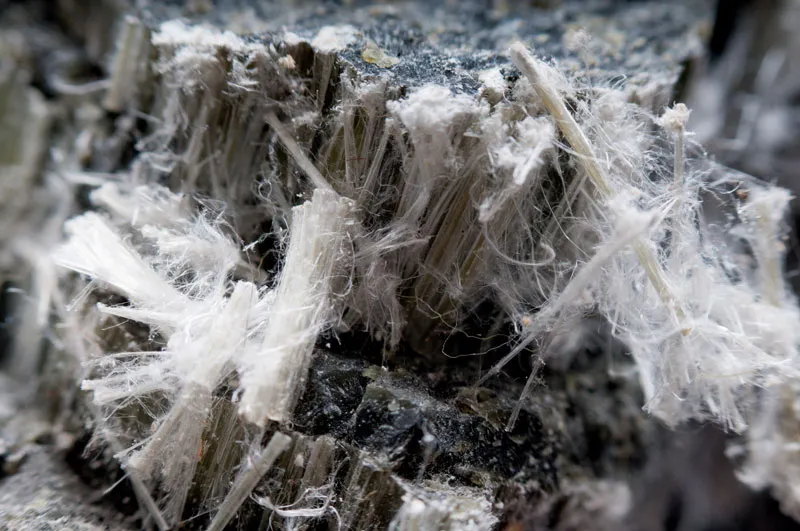Asbestlint, or asbestos tape, may seem like just another construction material. However, it carries significant risks that can impact your health and safety. If you’ve ever encountered it in an older building or during renovation projects, the stakes are higher than you might think. This unassuming tape has a dark history linked to serious health issues, making its proper disposal vital for everyone involved. Understanding what asbestlint is and how to handle it safely can protect not only yourself but also those around you. Let’s dive into why treating this material with care is essential and explore best practices for dealing with asbestlint effectively.
What is Asbestlint?
Asbestlint, commonly known as asbestos tape, is a type of insulation material used primarily in construction. It consists of fibers that contain asbestos, a naturally occurring mineral once prized for its heat resistance and durability.
This tape was often applied to pipes, boilers, and other surfaces requiring thermal protection. Its flexibility made it easy to use in various applications. However, the very properties that made asbestlint appealing pose significant hazards.
When intact, asbestlint may not seem dangerous. Yet disturbance or deterioration can release harmful asbestos fibers into the air. Breathing in these microscopic particles can lead to serious health issues over time.
Recognizing asbestlint’s presence is crucial during renovations or demolition projects. Understanding what this material is helps underscore the importance of safe handling practices when dealing with it.
Health Risks Associated with Asbestlint
Asbestlint poses serious health risks that cannot be ignored. This material, often found in older buildings, contains asbestos fibers which can become airborne when disturbed. Inhalation of these fibers is particularly dangerous.
Long-term exposure to asbestos can lead to severe respiratory conditions such as asbestosis and lung cancer. These diseases develop silently over many years, making early detection difficult.
Moreover, it’s not just construction workers at risk; families living near contaminated sites may also face hazards. Even minor renovations can release harmful particles into the air.
The symptoms are insidious and may take decades to manifest. By the time individuals experience coughing or chest pain, considerable damage could have already occurred.
Awareness of these dangers is essential for anyone dealing with materials like asbestlint. Proper precautions must always be taken to minimize exposure and protect health effectively.
Proper Disposal Methods for Asbestlint
When dealing with asbestlint, proper disposal is non-negotiable. First and foremost, it’s essential to identify the type of asbestos material involved. Not all types require the same disposal methods.
Sealing asbestlint in plastic bags or containers is a common practice. This minimizes exposure during transportation. Always label these containers clearly to prevent accidental breaches.
Next, take the waste to designated asbestos disposal sites. These facilities are equipped to handle hazardous materials safely. Many local governments provide resources for finding nearby locations.
It’s crucial not to mix asbestlint with regular household waste; this can pose serious health risks to sanitation workers and others who may come into contact with it later on.
If you’re uncertain about any part of this process, consulting professionals ensures compliance with safety protocols while safeguarding public health against potential dangers associated with improper handling.
Laws and Regulations Surrounding Asbestlint Disposal
The disposal of asbestlint is tightly regulated due to its hazardous nature. Various laws at local, state, and federal levels dictate how this material should be handled.
In many jurisdictions, specific permits are required for the removal and disposal of asbestlint. These regulations help ensure that safety protocols are followed during transportation and processing.
Landfills often have restrictions on accepting asbestos-containing materials. Only designated facilities with the proper equipment can handle such waste safely.
Failure to comply with these regulations can result in hefty fines or legal repercussions. It’s essential for property owners to stay informed about current legislation regarding asbestlint disposal.
Employing certified professionals not only guarantees compliance but also reduces health risks associated with improper handling. Abiding by these guidelines is crucial for public safety and environmental protection.
The Importance of Hiring a Professional for Asbestlint Removal
When dealing with asbestlint, safety should always be a top priority. This material poses serious health risks, making professional handling essential.
Experts in asbestos removal are trained to manage and dispose of this hazardous substance properly. They possess the right tools and equipment designed for safe extraction. Without proper gear, attempting DIY removal can lead to contamination and exposure.
Professionals also understand local regulations surrounding asbestlint disposal. This ensures compliance with laws that protect both public health and the environment.
Moreover, hiring specialists reduces stress for homeowners or property managers who may not know how to navigate this complex process. Their experience allows for efficient work without sacrificing safety.
Investing in professional help is crucial when it comes to managing asbestlint effectively. It safeguards your well-being while ensuring that all protocols are followed meticulously.
Alternatives to Asbestlint
When considering alternatives to asbestlint, materials like mineral wool insulation emerge as a strong contender. It boasts excellent thermal resistance and is non-combustible.
Another option is cellulose insulation made from recycled paper products. This eco-friendly choice provides good soundproofing without the health risks associated with asbestos.
Fiberglass insulation also serves as a popular substitute. It’s widely available and offers effective insulating properties while being safe for residential use.
For those focused on sustainability, options like hemp or cotton batts are gaining traction. They’re natural fibers that provide decent insulation without compromising indoor air quality.
Exploring these alternatives can help avoid the dangers tied to asbestos while still achieving energy efficiency and comfort in your space. The shift toward safer materials reflects growing awareness of health implications linked to traditional choices.
Conclusion and Final Thoughts
Asbestlint is a material that demands careful handling and disposal. Understanding its nature and the health risks associated with it is essential for anyone involved in construction or renovation work. The dangers of asbestos exposure are well-documented, making proper disposal methods non-negotiable.
Adhering to laws and regulations surrounding asbestlint not only protects your health but also ensures compliance with legal requirements. These rules exist for good reason—to safeguard individuals from the harmful effects of airborne asbestos fibers.
For those contemplating removal, hiring professionals can save you time, stress, and potential health hazards. Experts have the training and equipment necessary to handle asbestlint safely.
Additionally, exploring alternatives to asbestlint can pave the way for safer building practices in the future. Numerous options exist that eliminate risks while still providing effective solutions.
Proper education about asbestlint empowers everyone—contractors, homeowners, and workers alike—to make informed choices regarding this hazardous material. Taking steps towards safe management may seem daunting at first but is crucial for long-term safety and peace of mind.

